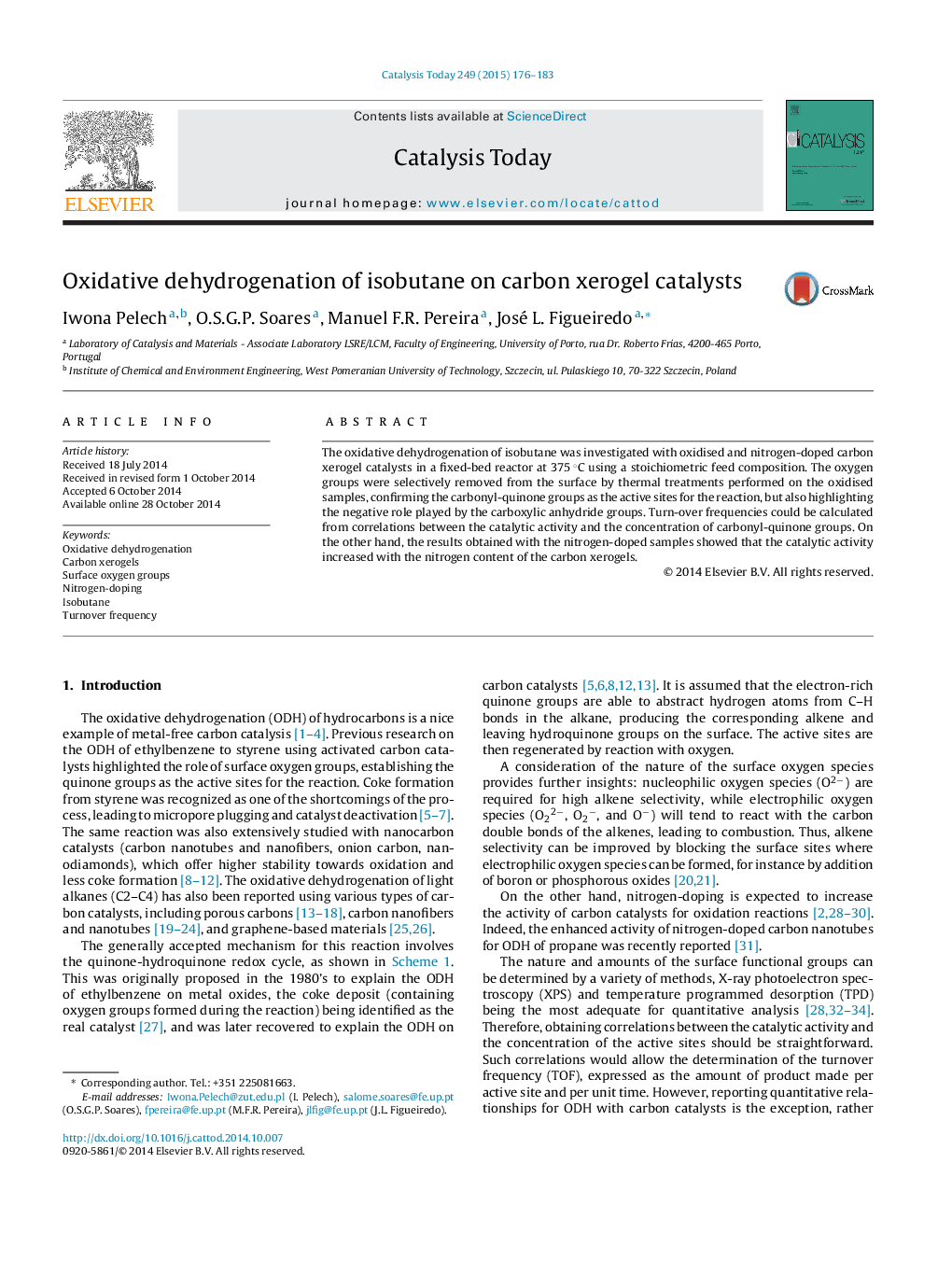| Article ID | Journal | Published Year | Pages | File Type |
|---|---|---|---|---|
| 53724 | Catalysis Today | 2015 | 8 Pages |
•Modified carbon xerogels as catalysts for the oxidative dehydrogenation of isobutane.•Carbonyl-quinone groups confirmed as the active sites for the reaction.•The presence of carboxylic anhydride groups decreases the catalytic activity.•The catalytic activity increases with the nitrogen content of the carbon xerogels.
The oxidative dehydrogenation of isobutane was investigated with oxidised and nitrogen-doped carbon xerogel catalysts in a fixed-bed reactor at 375 °C using a stoichiometric feed composition. The oxygen groups were selectively removed from the surface by thermal treatments performed on the oxidised samples, confirming the carbonyl-quinone groups as the active sites for the reaction, but also highlighting the negative role played by the carboxylic anhydride groups. Turn-over frequencies could be calculated from correlations between the catalytic activity and the concentration of carbonyl-quinone groups. On the other hand, the results obtained with the nitrogen-doped samples showed that the catalytic activity increased with the nitrogen content of the carbon xerogels.
Graphical abstractFigure optionsDownload full-size imageDownload high-quality image (71 K)Download as PowerPoint slide
